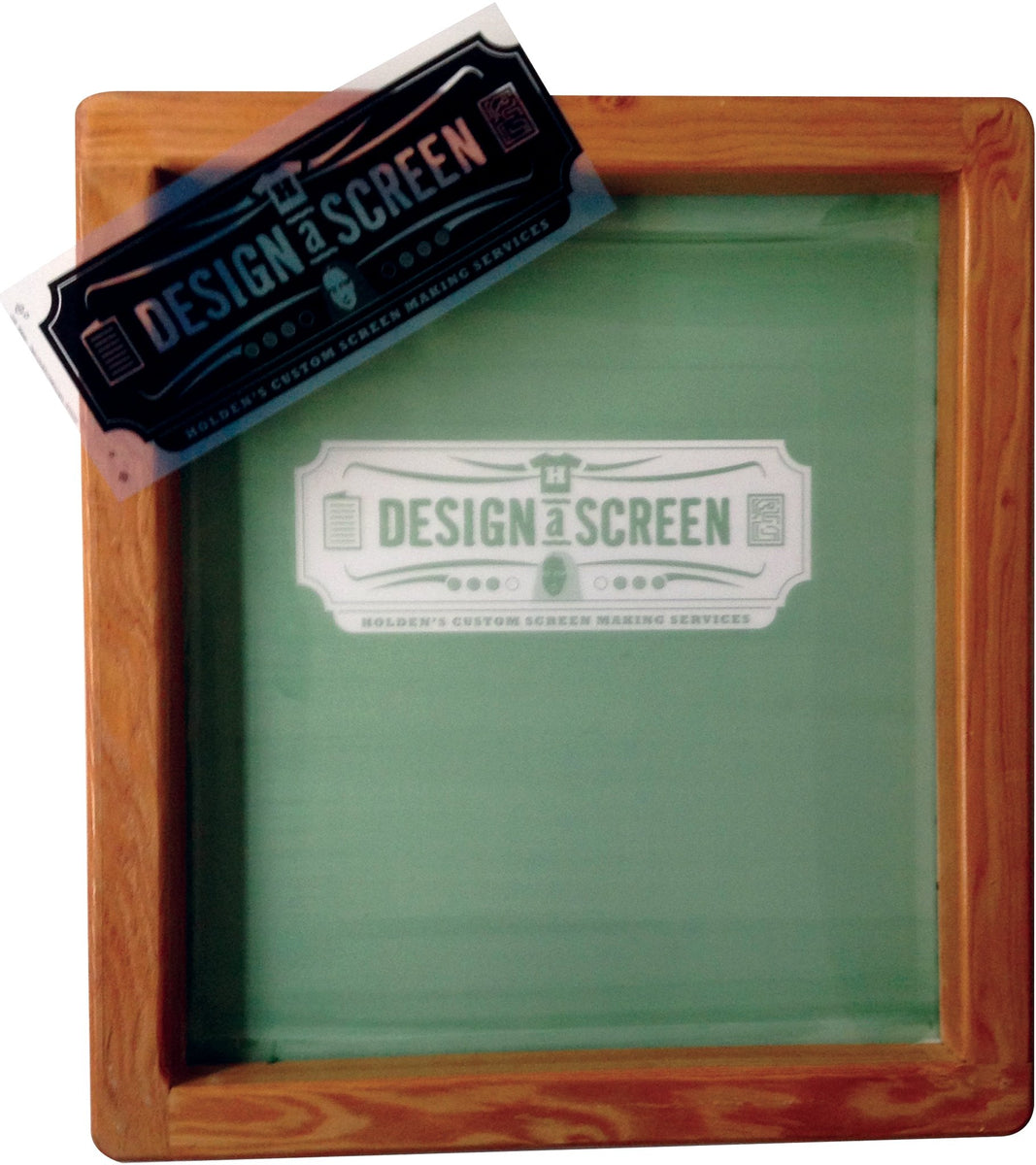Screen Printing Uncovered: Every Little Thing You Need to Learn About T-Shirt and Garment Printing Techniques
Display printing is a fascinating method that integrates art with technique, offering unlimited possibilities for creative thinking. Ready to discover the important elements that make screen publishing an art kind?
The Essentials of Display Printing: Just How It Works
When you plunge right into display printing, you'll find it's both a scientific research and an art. At its core, display printing involves producing a stencil, or screen, that permits ink to pass via only in specific areas (screen printing kit). You start by choosing your style and preparing your screen with a light-sensitive solution. When you expose this emulsion to light, it hardens, leaving your style as a negative space.
Setting the display over the material, then utilize a squeegee to press ink through the screen onto the garment. Each action is crucial, and mastering them will certainly elevate your display printing skills, transforming easy garments right into special, meaningful items.
Kinds of Display Printing Techniques
As soon as you realize the basics of screen printing, it's time to check out the different strategies that can raise your styles. One preferred method is traditional display printing, where ink is pressed via a stenciled display. This method is wonderful for vibrant, dynamic shades. Then there's water-based ink printing, which supplies a softer feeling and is environment-friendly, but it calls for a various method to healing.
One more option is plastisol printing, recognized for its resilience and vibrant shades, making it a favorite for lots of brands. Experiment with halftone printing to create gradient results and elaborate designs.
Crucial Devices for Screen Printing
To attain magnificent lead to display printing, having the appropriate tools is essential. You'll require a tough screen printing frame, which holds the mesh that moves your design onto the garment. Next off, buy premium squeegees; these are crucial for applying ink equally throughout the screen. You'll likewise need an excellent exposure unit to produce your screens, along with a washout cubicle for cleansing them after use. A trusted warm source, like a conveyor dryer or heat press, is critical for curing your prints to assure longevity. Don't fail to remember a correct workspace, furnished with tables and storage space for your supplies. Ultimately, protective equipment, such as gloves and masks, will maintain you secure from chemicals and inks. With the right tools, you'll be well on your method to producing professional-quality prints.
Choosing the Right Inks and Materials
When picking inks and products for display printing, you need to consider the type of ink that works best for your project. Think regarding fabric compatibility to assure your layouts look great and last long. Check out environmentally friendly ink choices to make your printing procedure more lasting.
Kinds Of Display Inks
Selecting the right screen ink is necessary for accomplishing dynamic, sturdy prints that satisfy your task's demands. There are a number of kinds of display inks to analyze. Specialized inks, such as metallic or glow-in-the-dark, can add one-of-a-kind impacts to your layouts.

Textile Compatibility Considerations
Understanding fabric compatibility is crucial for achieving premium screen prints, especially given that various materials react uniquely to various inks. When picking inks, think about the textile kind-- cotton, polyester, or blends. For cotton, water-based inks work well, providing soft qualities and breathability. Polyester, on the other hand, usually requires plastisol inks for better bond and lively shades. If you're publishing on blends, you could require to utilize a mix of both kinds. Constantly test your inks on sample fabric to ensure they stick effectively and maintain color stability. Additionally, remember that material weight and appearance can impact the last outcome, so choosing the right ink and product combo is crucial for your project's success.
Eco-Friendly Ink Options
Green inks are coming to be a prominent selection for screen printers that intend to reduce their environmental effect while keeping high quality. When picking inks, consider water-based inks, which are much less damaging and easier to cleanse up compared to standard solvents. These inks bond well with textiles, delivering vivid outcomes without hazardous chemicals. You could also explore eco-solvent inks that utilize less unpredictable organic compounds (VOCs), making them a more secure choice for both your health and the world.
Additionally, search for inks made from renewable energies, such as soy or vegetable-based options. By choosing the best inks and materials, you'll not only produce stunning designs but also add to a much more lasting printing procedure. Make the button, and your prints will show your commitment to the atmosphere!
Preparing Your Design for Screen Printing

Submit Layout Demands
To ensure your design looks dynamic and sharp on textile, you'll need to pay close focus to submit style needs for screen printing. Begin with vector documents like AI or EPS, as they can be scaled without losing high quality. If you use raster pictures, select high-resolution files, such as TIFF or PNG, ideally at 300 DPI. Stay clear of using JPEGs, as they can lose clarity when resized. Additionally, make certain your design has a transparent history to avoid undesirable white sides on your prints. Maintain shade settings in mind; CMYK is standard for screen printing, so convert your RGB designs as necessary - screen printing kit. By adhering to these standards, you'll establish your artwork up for an effective print.
Shade Separation Strategies
Color splitting up is an important step in preparing your design for display printing, and mastering it can significantly boost your print top quality. You'll require to break your layout into individual shades, as each shade requires a different display during printing. This precision not just ensures accurate color depiction yet likewise enhances the printing process.
Resolution and Dimension
Achieving the most effective outcomes in display printing starts with assuring your style has the best resolution and dimension. Ideally, your artwork needs to go to least 300 DPI (dots per inch) for sharp, clear prints. Your last product could look pixelated and less than professional. if you use reduced resolution.
When it involves dimension, take into consideration the dimensions of your print area. Design your artwork to match the last print dimension, preferably developing it in the real dimensions you'll be publishing. By doing this, you'll avoid any kind of unforeseen scaling issues.
Always examine your style in both vector and raster formats. Vector graphics can be scaled without shedding top quality, making them perfect for screen printing. Preparing appropriately will ensure your layout looks remarkable on every garment!
Step-by-Step Screen Printing Process
Screen printing is a vibrant process that permits you to produce vivid styles on numerous surface areas. To start, you'll require a display, solution, and your picked ink. First, prepare your screen by cleaning it extensively. Next off, use the emulsion equally and let it completely dry in a dark location. As soon as dry, subject your display to light with your style put on it, which will certainly harden the emulsion where the light hits, developing a pattern - screen printing kit.
After rinsing the unexposed the original source emulsion, your screen prepares. Set it up on your printing surface and align your garment under it. Put ink onto the display and use a squeegee to press the ink through the pattern onto the material. Raise the screen carefully and let the print dry. Heal the ink making use of warmth to guarantee sturdiness. That's it! You have actually successfully screen published your design.
Tips for Successful Screen Printing Projects
While you're diving into your screen printing tasks, keep in mind that preparation is essential to success. Begin by collecting all your products-- inks, displays, garments, and squeegees. A tidy work area helps avoid unwanted mistakes, so clean up before you begin.
Following, verify your artwork is high-resolution and correctly sized for your garment. Evaluate your display for proper exposure and clean it Click This Link extensively to avoid spots. When mixing your inks, follow the manufacturer's standards to accomplish the best consistency.
Throughout printing, use even stress with your squeegee for consistent outcomes. Don't hurry; take your time to validate each print meets your standards. After printing, let your garments completely dry completely before managing or packaging them.
Finally, constantly keep a sample of your benefit future reference. In this manner, you can assess your progress and improve your techniques in time. Pleased printing!

Often Asked Questions
Exactly how Long Does It Require To Establish up a Screen Printing Job?
Establishing up a screen printing task normally takes about 30 minutes to an hour. You'll prepare the displays, mix inks, and adjust the press. The time differs based upon intricacy and experience, so remain arranged!
Can I Publish on Various Fabric Enters Making Use Of the Same Method?
Yes, you can publish on various fabric types using the exact same technique, however you'll need to change your setups and inks. Some materials soak up ink in different ways, so exploring guarantees the very best results for each and every product.
What Are Typical Errors to Stay Clear Of in Screen Printing?
When screen printing, prevent typical blunders like making use of the incorrect ink, neglecting proper exposure times, or missing pre-press checks. Constantly examine your setup and preserve tidy displays to guarantee quality results each time.
How Can I Properly Tidy and Maintain My Display Printing Devices?
To appropriately tidy and maintain your screen printing tools, you need to regularly wash displays with proper solvents, examine squeegees for wear, and assure all tools are saved completely dry and dust-free. Uniformity stops expensive repair services and enhances efficiency.
Is Display Printing Eco-friendly Compared to Other Approaches?
Display printing can be a lot more eco-friendly than other approaches, especially if you make use of eco-conscious products and water-based inks. By selecting sustainable supplies and techniques, you decrease waste and reduce your impact on the planet.
Display Printing Uncovered: Every Little Thing You Required to Know About Tee and Garment Printing Techniques
At its core, screen printing includes producing a pattern, or screen, that enables ink to pass via only in particular locations. Position the display over the material, then use a squeegee to push ink with the screen onto the garment. One popular method is conventional display printing, where ink is pushed via a stenciled screen.When picking inks and materials for display printing, you require to take right into account the type of ink that functions finest for your job.